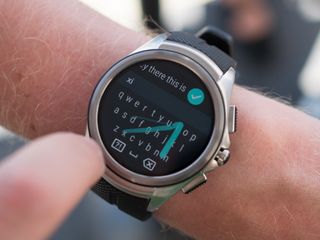Google delays Android Wear 2.0 until early 2017, adds Play Store support

Google is pushing back the public release of Android Wear 2.0, the huge upgrade to the company's wearables platform unveiled this summer, to early 2017. Announced alongside the third developer preview, Google says that after a great response from the developer community thus far, it has "decided to continue the preview program into early 2017, at which point the first watches will receive Android Wear 2.0." One more developer preview will be released in the coming months before the platform is submitted to OEMs.

While the delay will be disappointing to many Wear fans, it's clear it is for a reason: The scope of Android Wear 2.0 is growing. To wit, Google is adding Play Store features to the smartwatch platform.
With Play Store for Android Wear, users can browse recommended apps in the home view and search for apps using voice, keyboard, handwriting, and recommended queries, so they can find apps more easily. Users can switch between multiple accounts, be part of alpha and beta tests, and update or uninstall apps in the "My apps" view on their watch, so they can manage apps more easily.Perhaps the coolest feature: If users want an app on their watch but not on their phone, they can install only the watch app. In fact, in Android Wear 2.0, phone apps are no longer necessary. You can now build and publish watch-only apps for users to discover on Google Play.
That's right, Google is separating Wear apps from their phone and tablet counterparts, a move that seems poised to herald a new era of cellular connected Android Wear devices.
More: Android Wear 2.0 hands-on from Google I/O 2016!
Google says that it asked developers what they wanted from Wear, and many of them brought up the difficulty of discovering great Wear apps, leading to the decision to add a separate app store.
The new developer preview also adds a number of interesting and useful features to Android Wear 2.0:
- Improvements to complications, including explicit permissions for those that require access to personal information.
- Inline actions for notifications, which is based on the APIs available to developers in Android 7.0 Nougat, allowing users to reply using voice or the new on-screen keyboard shipping with Wear 2.0.
- Smart replies that are generated on the Watch itself, so no personal data is shared with Google. This method uses machine learning, and is based on the same technology Allo uses to create its smart replies.
What do you think of Android Wear 2.0 so far?
Be an expert in 5 minutes
Get the latest news from Android Central, your trusted companion in the world of Android
Daniel Bader was a former Android Central Editor-in-Chief and Executive Editor for iMore and Windows Central.

